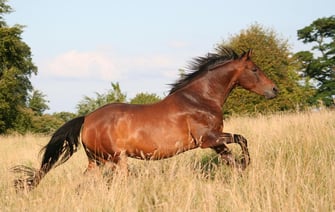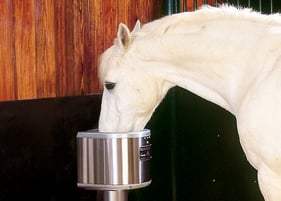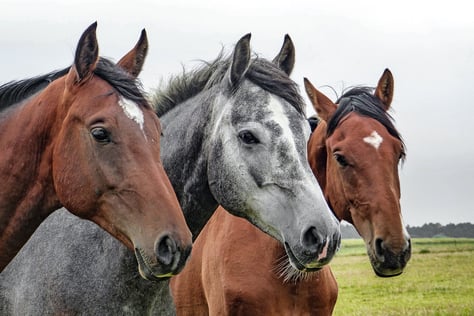With high temperatures and dangerous heat waves looming through the Midwest and south this week it is important to remember the dangers of heat stress/exhaustion and heat stroke. Heat exhaustion and heat stroke are extremely dangerous conditions for not only you but also your horse and other animals. It is often seen during the summer months and in areas where the humidity is high. Strenuous activities or sports such as eventing, jumping, combined driving, or even a simple ride during high temperatures can cause heat stroke/stress.  There is a difference between heat stress and heat stroke. Heat stroke can occur over a relatively short period of time while heat stress/exhaustion, usually results from protracted fluid and electrolyte loss during exhaustive exercise. As your horse continues to move, heat builds in his muscles. When the number of your horse’s respiration is faster than his heart rate per minute, this is called an inversion. This is a sign of high internal body temperature and the respiratory tract is attempting to dump some of the heat load. To remove the heat, your horse sweats, pulling heat from the interior of his body to his skin in a process known as evaporative cooling. Warm air temperature and high humidity prevent a horse from adequately dissipating internal heat from his body.
There is a difference between heat stress and heat stroke. Heat stroke can occur over a relatively short period of time while heat stress/exhaustion, usually results from protracted fluid and electrolyte loss during exhaustive exercise. As your horse continues to move, heat builds in his muscles. When the number of your horse’s respiration is faster than his heart rate per minute, this is called an inversion. This is a sign of high internal body temperature and the respiratory tract is attempting to dump some of the heat load. To remove the heat, your horse sweats, pulling heat from the interior of his body to his skin in a process known as evaporative cooling. Warm air temperature and high humidity prevent a horse from adequately dissipating internal heat from his body.
Different horses are susceptible to heat problems. Horses with a full winter coat are at risk due to their hair maintaining their body heat during colder weather. Heavily muscled horses, such as Warmbloods and Quarter Horses, are at greater risk of retaining heat in the working muscles than leaner-breed horses such as Arabians or Thoroughbreds (thus the preference for these breeds in endurance racing). This is because they have a lower ratio of body surface area for cooling relative to their body mass that’s generating the heat. An overweight horse with abundant layers beneath his skin cannot dissipate heat as effectively as a fit horse. When transporting a horse in an enclosed trailer in hot and humid weather they are more sustainable to dehydration and heat stress. Additionally, a horse that was shipped to a warmer climate and has not been acclimated to exercise in hot and humid conditions is ill-prepared to deal with the added stress of the new environment no matter how fit he is. Most horses need at least three weeks in a warmer climate to allow their bodies to adapt and dissipate heat more efficiently.
Here are some steps to help your horse cool off more efficiently after exercise:
-Bring your horse to a walk so blood flow continues to flush metabolic waste and heat from his muscles.
continues to flush metabolic waste and heat from his muscles.
-Offer a bucket of water to your horse immediately following exercise. If your horse is overheated, find a shady spot preferably with decent air circulation from a light breeze or fan. Fans are helpful for convective cooling–as the air flows across the horse’s body, it pulls heat off the skin. In severe cases, severe dehydration might need to be treated with intravenous fluids. This can also help cool internal organs and muscles. Help your horse stay hydrated with automatic waterers.
In warm weather, copiously bathe the head, neck, and legs with cool water. Large blood vessels in these locations flush heat to the skin surface, and rapid evaporative cooling is achieved by continual sponging of these areas. Apply cool water and as it heats up, scrape it off of major muscle groups, such as over the loin and hindquarters.
Know your horse’s usual temperature, especially after exercise. A rectal temperature over 103.5° is a sure sign the horse is overheating. Also, know your horse’s respiration rate and heart rate and check them if you think your horse may be stressed. Finally, do the capillary refill test to check blood flow and the pinch test to test for dehydration.
Enjoy the summer with your horse but always be aware that too much sun, humidity, and exertion can cause problems for you and your horse.



